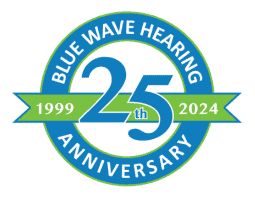- How Smoking Can Harm Your Ears - March 11, 2025
- Succeeding in the Workplace with Hearing Aids - February 10, 2025
- Welcoming the New Year with Better Hearing - January 2, 2025
Stay in the Loop With Hearing Loops
A hearing loop is a communication system that many theaters and auditoriums offer that allow AGX® hearing aids to receive a signal directly from the source. The loops help you cut through the noise in meeting halls, churches, and even your home so you never miss a moment. With no need for specific tuning, additional equipment, or headphones, a hearing loop is one of the most popular and effective listening accessories available.
Get in the (Hearing) Loop!
Some environments and situations simply aren’t optimal for your hearing aids. In concert halls and other wide-open venues that feature loud PA systems, sounds can echo and distort, making it difficult even for individuals with normal hearing to understand speech properly. Those with a hearing impairment, including those who use hearing aids, may have trouble with noise feedback or speech comprehension. Luckily, many venues are equipping their buildings with induction loop systems, which magnetically transmit sound to hearing aids and cochlear implants with telecoils (T-coils).
What Is Looping?
Looping systems serve as wireless loudspeakers that deliver sound from a source, such as a microphone, directly to your hearing aids. Many hearing aids these days are equipped with T-coils, offering looping capability to a wide number of those who use hearing aids. The looping system works similarly to Bluetooth® technology, which can be used to stream phone calls, music, and other audio from sources that are Bluetooth compatible.
What Are the Benefits of Looping?
Looping allows the hearing aid user to essentially bypass the ear’s process of receiving outside sounds and funneling them into the ear. Instead, it puts those sounds directly into the user’s ear via the hearing aids, which act as tiny personal audio streamers. Bypassing the need to hear the sounds in a wide-open hall removes possible technical difficulties like echoed speech and feedback. Looping offers a hearing “shortcut” and personalized sounds that make it easier for you to hear.
Where Are Looping Systems Found?
Churches, cathedrals, concert halls, theaters, auditoriums, airports, train stations, and other public venues are most likely to offer looping systems, although homes can also be equipped. Europe has already made these systems available in nearly all countries, and in many of their cities’ biggest venues, but Americans aren’t as aware of the technology. Loop Finder, created by the Hearing Loss Association of America, has a website you can use to find venues near you that have hearing loops.
How Do You Connect to Looping Systems?
Hearing aids that have a T-coil will usually have a “T” setting on the device itself that you can switch to. Buildings that offer hearing loops will provide a magnetic, wireless signal that is automatically picked up by the hearing aid when it’s set to the “T” setting.

